The Best LED Headlight Bulbs to Light Up the Road

If your car came from the factory with halogen or HID bulbs, you’re going to need to replace them or upgrade them down the line. Both of these bulb types lose light output over time; thus, even if they’re functional, they aren’t performing like new. When it comes time to replace them, why go with the same lighting solution when there are better options? The LED light technology that illuminates the newest models can work with your older car too.
But which one do you pick? When you want a simple replacement halogen, familiar brands like Sylvania and Phillips are sitting on the shelf. When it comes to LED lamp upgrades, things get a little more blurry. There are new brands that you probably don’t know; however, this doesn’t necessarily mean they aren’t of good quality.
Don’t worry, we know lights. Halogen, HID, and LED. We’ve delved into the ratings to find the best LED headlight bulbs. The ones that will improve nighttime visibility without sacrificing durability. Or blinding the drivers coming the other way.
Why You Should Trust AutoGuide's Product Reviews
We drive the latest new cars, trucks, and SUVs, but did you also know the team at AutoGuide.com tests tires, waxes, wiper blades, and pressure washers? Before we recommend a product as a top pick in one of our popular product lists, our editors put it to the test. We run through all its features, test the claims that the brand makes about each product, and then give an honest opinion on what we like and don’t like from our personal experience. As experts in all-things automotive, from minivans to sports cars, and from portable jump starters to ceramic coating, we want to make sure you buy the product that’s right for you.
How to Measure LED Headlight Brightness
Brightness is measured in lumens, an essential factor when picking a replacement bulb. Too bright, and you risk dazzling oncoming traffic; not bright enough, and your visibility will suffer. You will also want to compare the advertised working life if you’re doing a lot of night driving. LED headlights last much longer than halogen and HID bulbs, and most advertise at least 30,000 hours of life, which adds up to around twenty years of life if used an average of four hours per night.
Most importantly, vehicle owners can use many LED headlight bulbs to replace halogen headlights if they want brighter, longer-lasting light. Many manufacturers include plug-and-play kits with their products, so you don’t need to make any modifications to your vehicle. Brightness can depend both on the specific bulbs available for your car and the different model lines that manufacturers offer, with a range from 6,000lm (lumens) up to 12,000lm. However, even 6,000lm is brighter than almost any halogen headlights.
Can You Upgrade Your Headlights to the Best LED Headlight Bulbs?
It might not make sense initially, but it can be easier to upgrade older vehicles to the best LED headlight bulbs than newer cars, due to the CAN bus (Controller Area Network) system that connects the many computerized components.
LED headlights often include their own CAN bus systems and should be plug-and-play. However, it’s worth checking reviews for your specific model. As outlined in our instructions, conduct a simple test before final installation. When in doubt, check our forums for firsthand experiences with your car model.
See our Table of Contents for more information, including choosing the correct bulbs and installing and reviewing our Editor’s Pick.
Table of contents
- 1. Editor's Pick: SEALIGHT Scoparc S1 LED Bulbs Combo, Super Bright Cool White
- Promoted Product: XenonPro LED Headlights
- 2. GTR Lighting Ultra 2.0
- 3. Brightest LED Headlights: Auxito LED Headlights
- What Are The Differences Between Halogen and LED Headlight Bulbs?
- Can I Upgrade to LED Headlights From Halogen Headlights?
- Is An LED Headlight Upgrade Legal?
- LED Brightness and the Law
- How To Stay Out Of Trouble When You Upgrade To LEDs
- Do I Need to Replace Both Headlight Bulbs at the Same Time?
- Upgrading to LEDs Part 1: Choosing the right bulb
- Upgrading to LED Headlights Part 2: Removing Your Old Halogen Bulbs
- Recent Updates
1. Editor's Pick: SEALIGHT Scoparc S1 LED Bulbs Combo, Super Bright Cool White
After considerable research, we chose the four-light high-low S1 kit from SEALIGHT to upgrade the factory halogen projector bulbs in a 2014 Mazda Mazda5. We were convinced by 90% four- or -five-star ratings from over 10,000 people, a great feature set, and light quality.
The size we needed was the common 9005/HB3 H11/H9/H8 form factor, which required both high- and low-beam modules. We'll need a similar 9005/HB3 9006/HB4 bulb when we upgrade the AutoGuide Dodge Magnum RT later this winter. The Scoparc S1, their entry-level direct fit bulb, produces 6,500 lumens of light per bulb at a bright white 6,000k color temperature. While you can go all the way up to a supernova 15,000lm in their Scoparc S2, 6,500lm is still an enormous upgrade from the 1,350lm Sylvania Silverstars they're replacing, which were considered bright for halogens.
The fanless design with an aluminum heatsink and fins runs much cooler than a halogen, and an inline CAN bus module ensures they work properly with modern vehicles. As you'll read in our how-to, the installation was easy in our test vehicle. According to SEALIGHT, their Scoparc S1 LED headlights are IP67 water-and dust-proof, have a lifespan of 30,000 hours, and include a three-year warranty.
Pros | Bright, even light |
Cons | Expensive, extra cord to deal with |
Promoted Product: XenonPro LED Headlights
The most premium option on this list, XenonPro LED headlight kits are the priciest option to make the cut, but they’re well worth the extra outlay for the lifetime warranty that covers the bulbs, drivers, and accessories—we’re talking everything. If a part fails, XenonPro will replace it for just the cost of postage.
Not that we figure you’ll be making much use of that warranty; XenonPro’s LED headlight kits are well-built with solid aluminum bulb casings that soak up plenty of waste heat, and equipped with a quiet, built-in micro-fan for active cooling. They’re made to withstand the harsh demands of automotive use, being 100% water, shock, dust, and rumble-proof, and rated for 45,000 hours of reliable use.
As an upgrade over standard halogen bulbs, XenonPro’s LEDs boast up to 300% more brightness, putting out a max of 9,000 lumens per pair, with advanced anti-glare technology to avoid blinding other drivers. They install easily in less than half an hour. Four distinct colors are available—3,000K (yellow), 6,000K (bright white), 8,000K (blue), and 12,000K (purple)—and there’s even a CAN bus-ready option to make sure the bulbs can communicate properly with your vehicle’s computer system.
*This is a sponsored placement.
Pros | Premium build quality, super-bright output, easy install, lifetime warranty |
Cons | Premium priced |
2. GTR Lighting Ultra 2.0
While some LED headlight bulbs use off-the-shelf LEDs, GTR Lighting uses chips designed specifically for automotive use. That's good for light output when it's crammed into a headlight housing instead of a household lamp. It is also good for bulb durability and longevity; when was the last time your kitchen went 60 miles per hour down a dusty back road?
The Ultra 2.0 bulbs can put out as many as 3900 lumens. That's a massive amount of light output to make sure you're able to see down the road. GTR also makes sure that the heat sink and fan in their bulbs is properly sized for the power input. This helps ensure the bulb light colour doesn't fade to yellow or dim over time as the lamp heats up. The fan is bearingless, too, giving it a lifespan that can keep up with the lamps and likely outlast your car.
How confident is GTR lighting in the durability of these lamps? They coma with a lifetime warranty. That's commitment.
GTR Lighting offers a wide range of automotive sizes, including popular 9006 and 9007 lamps as well as H4, H7, and H13. This helps make sure that no matter your vehicle you can upgrade your nighttime visbility.
Pros | Massive light output, extreme durability |
Cons | They're not cheap. Some users report dust cover fitment issues |
Bottom Line | This is a seriously capable lamp when you want a big upgrade |
3. Brightest LED Headlights: Auxito LED Headlights
Auxito makes a wide variety of vehicle lighting products, including five different series of LED headlights, which come in 9005/HB3, 9006/HB4,9007/HB5, 9008/H13, 9012/HIR,H11B, H4/9003/HB2,and H9/H8/H11 sizes. There are lots of options for brightness, and we found that among their many models with over 100 reviews, they were almost uniformly rated between 89% and 92% positive, an excellent score for any product.
The company claims outputs up to 100 watts and 24,000 lumens per bulb, among the brightest on the market (and we think too bright for everyday use). When we installed them, we found the 60 watt versions to be extremely bright, and the 100 watt bulbs (below) were dazzling.
Auxito's high beams are concerningly bright. The low beams are plenty. Photo credit: David Traver Adolphus / AutoGuide.com.
Both versions we tested include 12,000 RPM cooling fans to cope with the heat, and all models are rated for between 30,000 and 50,000 hours (30 years) of life.
Auxito also says the company models its LED bulbs to mimic halogen output patterns with a sharp cutoff, meaning you should get the same beam spread from your headlamp enclosures. However, this will depend greatly on your particular headlamp housing. Our Editor's Pick Sealights had an excellent cutoff for both high and low beams in a Mazda, but only the low beam Auxitos did in a Dodge. They were more than bright enough, but a bad pattern can actually put less light on the road where you need it than dimmer conventional bulbs.
Where needed, Auxito includes a CANbus module, but you should always hook up and check your bulbs before final installation—see our instructions below. Auxito offers a two-year warranty on their headlight bulbs, and there is a local Kentucky phone number, email, and contact form on the auxito.com site.
Pros | Wide variety of sizes and colors, among the brightest available, some models fan-cooled |
Cons | Complaints about customer service and warranty support |
What Are The Differences Between Halogen and LED Headlight Bulbs?
The vast majority of vehicles leave dealership lots these days with one of three headlight bulbs: halogen, HID, or LED. Halogen bulbs are the oldest of the three and are still very common. They're extremely affordable and typically have a life of around 800 hours. When compared to HID or LED bulbs however, halogen bulbs are the worst performing of the three. They also require more energy than LED bulbs and run hot. You can upgrade to brighter halogen bulbs, but the brighter they are, the shorter their lifespan. At the end of the day, halogen bulbs offer enough lighting for safe driving, but upgrading to LEDs will make a noticeable difference to your experience.
LED headlight bulbs are becoming more commonly used by luxury automakers such as Audi, BMW, and Mercedes-Benz. You may be using LED bulbs at home, which deliver equal or better lighting with lower power consumption and longer life. LED headlight bulbs are similar, offering better performance and longevity at a greater cost. Fortunately they've become so popular and common these days that they don't cost significantly more than halogen bulbs. With claimed lifespans extending into decades, they'll easily pay for themselves.
Some will argue that LED headlight bulbs aren't as bright as HIDs, but they are definitely brighter than halogen bulbs. They also don't produce as much glare as HID headlights, and they don't need a small period of time to charge up. Just as important, LED bulbs don't use a filament that burns out or breaks, which allows them to last much longer than halogen bulbs. They may also be more resistant to vibration than bulbs with a conventional filament, which can be helpful if you drive on rough roads.
Can I Upgrade to LED Headlights From Halogen Headlights?

Each vehicle is different, so we can't say for sure that there's a set for your Lamborghini Countach, but if your car was built in the last quarter-century, you can almost certainly upgrade to LEDs. The aftermarket and the products in this list are designed to be retrofit kits for vehicles with halogen headlights.
Acura, Audi, BMW, Cadillac, Chevrolet, Chrysler, Dodge, Ford, GMC, Honda, Infiniti, Jeep, Lexus, Mercedes, Mini, Mitsubishi, RAM, Volkswagen, and Volvo models need an anti-flicker module as part of the LED circuitry to prevent flickering and dash warning lights. Many bulbs include this in the CAN bus, but you may have to buy it separately for some.
Is An LED Headlight Upgrade Legal?
Technically, yes. Potentially. Probably not. It's complicated.
The Federal Motor Vehicle Safety Standard s (FMVSS) prohibits any modification from stock unless the replacement meets a complicated suite of testing SAE standards, and receives DOT approval. If your make, model, and year was offered from the factory with an LED option, even swapping that in would be illegal if it doesn't have the correct SAE and DOT markings. In practice, we doubt any manufacturer is spending the tens or hundreds of thousands of dollars needed to receive regulatory approval, and we've never seen an LED with the markings that are required to certify it's legal.
At the same time, all kinds of modifications are illegal, including engine swaps, and that hasn't stopped people from putting Chevy LSs into everything. Individual states may have additional regulations and fines (such as Nebraska, where your low beams can't be brighter than needed to illuminate a pedestrian at 200 feet; $100 misdemeanor), but they can't supersede Federal law and make it legal.
LED Brightness and the Law
There is also a Federal standard for maximum brightness...which is complicated to translate into the real world, because you need luminous intensity (brightness) and apex angle (how the light spreads), and then a bunch of calculus (Φv = 2πIv (1−cos α/2), if you're playing along at home). If you had an LED with the same spread and intensity as an equivalent halogen, it might be around 6,000 lumens per bulb. Because LEDs have a broader and more even pattern than halogen bulbs, though, it could be much higher, because the total amount of light falling over the area is much greater, and the difference between a hot spot and the falloff is better (if you had a 40% apex angle, it would be 28,000 lumens!).
However, section 24212 of the recently passed Infrastructure Investment and Jobs Act (H.R.3684) directs the Secretary of Transportation to issue a new rule regarding headlights before the end of 2024, and many people expect replacement LEDs to be permitted*.
How To Stay Out Of Trouble When You Upgrade To LEDs
In the meantime, there are some things you can do to make sure you stay within the spirit of the law and out of trouble:
Make sure your headlights are aimed properly. Especially if you've gone to bigger tires or a lift, you're no longer going to be pointing down at the road. This is hazardous to everyone on the road, including yourself. It's also a great way to get pulled over and ticketed for your illegal equipment.
Don't use the nuclear fusion 10,000 lumen or brighter LED headlamps. That's another great way to get a ticket, blind a pedestrian, or confuse a passing Boeing.
A new rule was published on February 15, 2022, which allows for adaptive headlights. There's no word on LED upgrades yet, but we expect a wave of aftermarket adaptive headlights to be coming.
Do I Need to Replace Both Headlight Bulbs at the Same Time?
There is actually no definitive answer to this question, but we recommend replacing both your headlight bulbs at the same time, even if only one goes out. That's because swapping out just one headlight bulb could result in a difference in brightness between the two. Also, depending on your vehicle, changing out your headlight bulbs could be a cumbersome task—you're better off doing it once and saving yourself time down the road. And if your bulbs are the same age, they're likely to die at the same time. We've had them burn out within a week of each other.
If you're trying to be frugal or more practical—if it's not broken, why fix it—then make sure you keep a spare bulb handy for when the other one does eventually burn out.
Upgrading to LEDs Part 1: Choosing the right bulb
Our four-bulb kit came with cotton gloves, adhesive pads, and zip-ties.
There are many bulb types out there, and their part numbers can be confusing. Our SEALIGHT Scoparc S1 LED Bulbs are available in H13/9008, HB5/9007, HB2/H4/9003, HB3/9005, HB4/9006, HB3/H11/H9/H8/9005, and HB3/HB4/9005/9006 sizes. Fortunately, you don’t have to memorize dozens of sizes, just enter your make, model, and year into an online configurator, and let it choose the right part for you. Just to be safe, check your owner’s manual or Google it. Some cars have one high-low bulb, while many others have one for each. Then there are very similar foglamp bulbs, so always double check that you’re getting the right ones.
Which Cars Need an Anti-Flicker Module?
As we mentioned before, Acura, Audi, BMW, Cadillac, Chevrolet, Chrysler, Dodge, Ford, GMC, Honda, Infiniti, Jeep, Lexus, Mercedes, Mini, Mitsubishi, RAM, Volkswagen, and Volvo vehicles usually require an anti-flicker module. It should be included in the CAN bus circuitry in most headlights, but you should make sure. That leaves you to choose the type, color, and brightness of your LEDs.
Cooling and LED Lifespan
Older LED headlight bulbs almost all had cooling fans, but technology now lets them run just fine with heatsinks. We did notice that all the LEDs that advertise a 50,000 hour lifespan are still fan-cooled, but 5.7 years is a long time to expect a fan to run. Fans can make a little noise, but mostly, it's moving parts and complexity than can fail. Thirty thousand hours is still 20 years of average use.
LED Headlight Color And Brightness
We like the white 6,000K range for visibility, but you can get LEDs from a yellow 3,000K up to 12,000K purple. Some of these may be illegal in your area, or at least attract unwanted attention, so we’d stay in the 5,000-7,000K range.
The 6,500lm LED headlamps we’ll be installing here are as bright as anyone would want. Perceived brightness and usefulness will depend a little on how the beam spreads. LEDs generally have much a smoother and broader pattern than halogens.
Photo credit: David Traver Adolphus / AutoGuide.com
Upgrading to LED Headlights Part 2: Removing Your Old Halogen Bulbs
While some high-end cars might require removing the entire headlamp assembly, one of the most common methods is a simple twist lock. While you shouldn't touch halogen bulbs with your bare hands (the oils from your fingers will make hotspots on the quartz glass), it should be fine to handle both HID and LED headlights. But we always wear nitrile gloves just in case. Plus, it's greasy in there.
If you have a twist-lock style headlamp cluster, like most Japanese and Korean cars, the back of it will look something like it does in this 2014 Mazda.
The hardest part is usually detaching the socket. The base of most LED headlights has the same clip as this halogen bulb, which you have to press in. Firmly hold the base of the bulb with one hand while you press down on the clip, then just pull it straight off. It might help to press down on it with something hard, like the flat of a small screwdriver, and you may have to wiggle it gently free. Make sure you don't get any dust or moisture in the socket, as LEDs can be very sensitive. A piece of tape over the top is a good idea, and if you have a compressor, give the whole area a blast of air before you do anything.
- The arrow on the retaining lock ring has an arrow for the direction to tighten. You probably have to push in slightly against a tension spring, then turn in the opposite direction.
- Pressed-in tabs help lock the bulb in place. Don't twist too hard.
- The base of the bulb has tabs that match the notches in the ring. When they meet up, just pull it gently out.
And here's our old 9005 halogen headlamp bulb, and you can see right into the headlamp assembly.
Installation photos credit: David Traver Adolphus / AutoGuide.com
New LED bulb attached to the wiring harness to test.
Before you install the new LED bulbs, it's important to test them. All you need to do is clip them into the harness, set them somewhere safe (making sure nothing touches the LED cob), and turn on your headlights. Don't start your car, though. If they're working, you'll know it.
You want to be sure they don't flicker and there are no warnings on your dash.
Next, you just need to put the LED bulbs back into the socket. They have the same tabs as the halogen bulbs, above, so you'll need to align them with the slots. The red gaskets in our new bulbs were thicker and stiffer than the Sylvania Silverstar bulbs we replaced, so they needed a very firm push on the aluminum heat sink. Our bulbs came with additional wiring that held the CAN bus. We used the provided cable ties so it didn't rattle or accidentally vibrate loose.
We trimmed off the excess zip ties later, we promise.
Once we had all four tested and installed, it was out on the road to see if it made a difference. It was almost night and day.
We couldn't ask for any better light. These are the high beams.
In contrast to our halogens, the SEALIGHT Scoparc S1 LED headlight bulbs threw light evenly and broadly, lighting up the sides of the road with both high and low beams. We were particularly impressed with the razor sharp cutoff, which is vital to protect oncoming drivers from glare.
Our only complaint is that the included instructions both came in a tiny booklet, and were not very detailed. The difference between the high and low beam bulbs was not clearly called out, and should be obviously marked on the bulbs, or better, the CAN bus has plenty of room for big High and Low text. If you've changed your own headlight bulbs before, it's not going to be an issue, but if it was your first time, you could make an expensive mistake.
SEALIGHT isn't very clear on their warranty, either, but we believe it's three years.
Overall, we're thrilled, and wouldn't hesitate to use these in any car that needs years of great nighttime visibility.
Photo credit: David Traver Adolphus / AutoGuide.com
Recent Updates
- February 16, 2024: Further refined our list of recommendations down to just three picks for easier shopping. Our top recommendations remain the same.
- May 16, 2023: Removed several recommendations to reduce the size of the list to five picks.
- April 21, 2023: Removed Nilight LED Headlight Bulbs, added GTR Lighting Ultra 2.0
- December 15, 2022: Awarded Brightest LED Headlight bulbs to Auxito. Added additional photos and test results.
- December 5, 2022: Updated product links.
- October 27, 2022: Updated introduction and product links.
- August 23, 2022: Updated product links.
We are committed to finding, researching, and recommending the best products. We earn commissions from purchases you make using the retail links in our product reviews. Learn more about how this works.

After completing a degree project in automotive design, Dave wrote and photographed for almost a decade in print car magazines (remember those?), before transitioning to digital. He now subjects a series of old high-performance cars to the roads and weather in Vermont and wonders why they're always expensively broken. Please stop when you see him crawling under one on the side of the road.
More by David Traver Adolphus













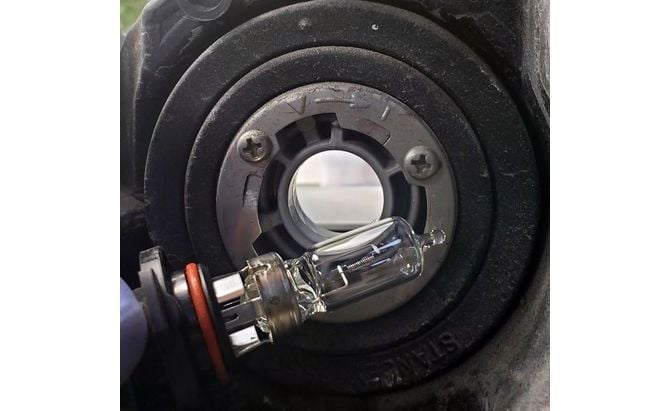

















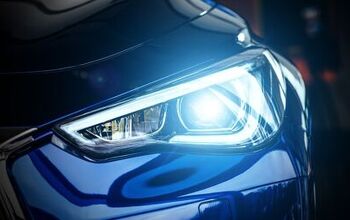
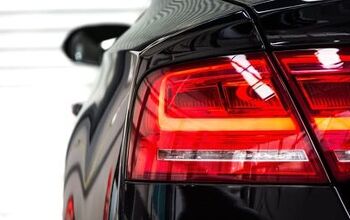
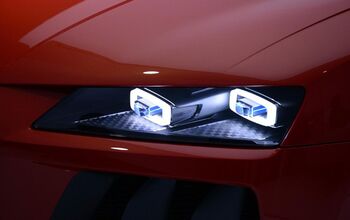


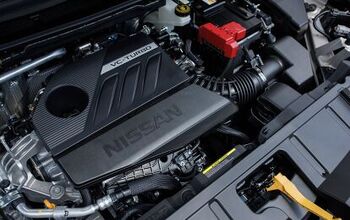





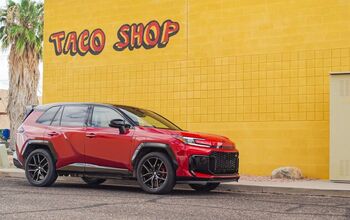




Comments
Join the conversation
Thanks for sharing this blog.
As a Mahindra Cars enthusiast, I've been searching for a one-stop hub that covers everything about these vehicles. This category absolutely delivers - from reviews to technical specs. A must-visit for any enthusiast out there.